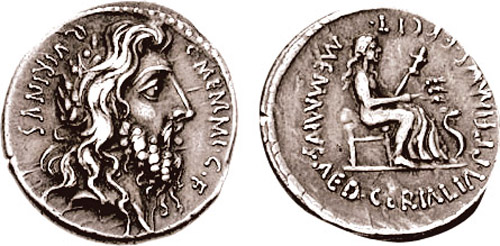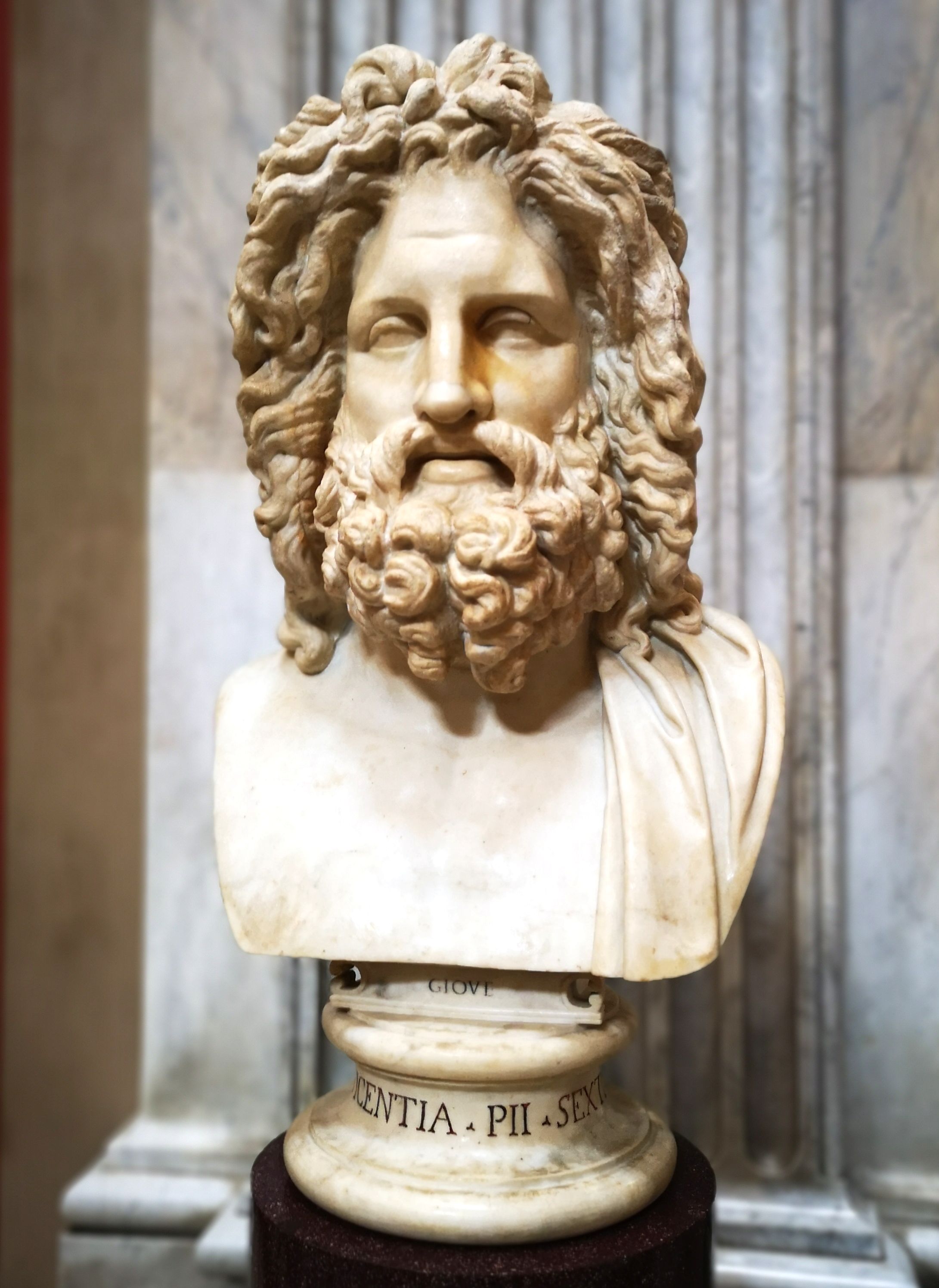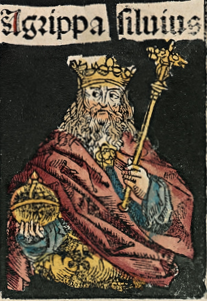|
King Armilus
Armilus ( he, ארמילוס) (also spelled Armilos and Armilius) is an anti-messiah figure in medieval Jewish eschatology who will conquer the whole Earth, centralizing in Jerusalem and persecuting the Jewish believers until his final defeat at the hands of the Jewish Messiah. His believed destruction symbolizes the ultimate victory of the Jewish Messiah in the Messianic Age. Sources The Sefer Zerubbabel is probably from the 7th century CE. Armilus is thought to be a cryptogram for Heraclius, a Byzantine emperor, and it is thought that the events described in the Sefer Zerubbabel coincide with the Jewish revolt against Heraclius. The 11th-century Midrash Vayosha, which describes Armilus, was first published at Constantinople in 1519. According to the ''Jewish Encyclopedia'', Armilus is "a king who will arise at the end of time against the Messiah, and will be conquered by him after having brought much distress upon Israel." He is spoken of in the Midrash Vayosha, Sefer Zerubb ... [...More Info...] [...Related Items...] OR: [Wikipedia] [Google] [Baidu] |
Apocalypse Of Pseudo-Methodius
Written in Syriac in the late seventh century, the ''Apocalypse of Pseudo-Methodius'' shaped and influenced Christian eschatological thinking in the Middle Ages.Griffith (2008), p. 34.Debié (2005) p. 228.Alexander (1985) p. 13.Jackson (2001) p. 348. Falsely attributed to Methodius of Olympus,Alexander (1985) p. 15. a fourth century Church Father, the work attempts to make sense of the Islamic conquest of the Near East.Ballard (2011) p. 51. The ''Apocalypse'' is noted for incorporating numerous aspects of Christian eschatology such as the invasion of Gog and Magog, the rise of the Antichrist, and the tribulations that precede the end of the world. The book, however, adds a new element to Christian eschatology: the rise of a messianic Roman emperor. This element would remain in Christian apocalyptic literature until the end of the medieval period. The book was early translated into Greek, Latin, Coptic, Armenian and later into Slavonic. Authorship and location The ''Apocalypse' ... [...More Info...] [...Related Items...] OR: [Wikipedia] [Google] [Baidu] |
Mary, Mother Of Jesus
Mary; arc, ܡܪܝܡ, translit=Mariam; ar, مريم, translit=Maryam; grc, Μαρία, translit=María; la, Maria; cop, Ⲙⲁⲣⲓⲁ, translit=Maria was a first-century Jews, Jewish woman of Nazareth, the wife of Saint Joseph, Joseph and the mother of Jesus. She is a central figure of Christianity, venerated under titles of Mary, various titles such as virgin or queen, many of them mentioned in the Litany of Loreto. The Eastern Orthodox Church, Eastern and Oriental Orthodox, Church of the East, Catholic, Anglican, and Lutheran churches believe that Mary, as mother of Jesus, is the Theotokos, Mother of God. Other Protestant views on Mary vary, with some holding her to have considerably lesser status. The New Testament of the Holy Bible, Bible provides the earliest documented references to Mary by name, mainly in the canonical Gospels. She is described as a young virgin who was chosen by God in Christianity, God to annunciation, conceive Jesus through the Holy Spirit ... [...More Info...] [...Related Items...] OR: [Wikipedia] [Google] [Baidu] |
Antichrist
In Christian eschatology, the Antichrist refers to people prophesied by the Bible to oppose Jesus Christ and substitute themselves in Christ's place before the Second Coming. The term Antichrist (including one plural form)1 John ; . 2 John . is found five times in the New Testament, solely in the First and Second Epistle of John. The Antichrist is announced as the one "who denies the Father and the Son." The similar term ''pseudokhristos'' or "false Christ" is also found in the Gospels. In Matthew ( chapter 24) and Mark ( chapter 13), Jesus alerts his disciples not to be deceived by the false prophets, who will claim themselves as being Christ, performing "great signs and wonders". Three other images often associated with the singular Antichrist are the "little horn" in Daniel's final vision, the "man of sin" in Paul the Apostle's Second Epistle to the Thessalonians, and the Beast of the Sea in the Book of Revelation. Etymology ''Antichrist'' is translated from the ... [...More Info...] [...Related Items...] OR: [Wikipedia] [Google] [Baidu] |
Zoroastrianism
Zoroastrianism is an Iranian religion and one of the world's oldest organized faiths, based on the teachings of the Iranian-speaking prophet Zoroaster. It has a dualistic cosmology of good and evil within the framework of a monotheistic ontology and an eschatology which predicts the ultimate conquest of evil by good. Zoroastrianism exalts an uncreated and benevolent deity of wisdom known as ''Ahura Mazda'' () as its supreme being. Historically, the unique features of Zoroastrianism, such as its monotheism, messianism, belief in free will and judgement after death, conception of heaven, hell, angels, and demons, among other concepts, may have influenced other religious and philosophical systems, including the Abrahamic religions and Gnosticism, Northern Buddhism, and Greek philosophy. With possible roots dating back to the 2nd millennium BCE, Zoroastrianism enters recorded history around the middle of the 6th century BCE. It served as the state religion of the ancient Iran ... [...More Info...] [...Related Items...] OR: [Wikipedia] [Google] [Baidu] |
Angra Mainyu
Angra Mainyu (; Avestan: 𐬀𐬢𐬭𐬀⸱𐬨𐬀𐬌𐬥𐬌𐬌𐬎 ''Aŋra Mainiiu'') is the Avestan-language name of Zoroastrianism's hypostasis of the "destructive/evil spirit" and the main adversary in Zoroastrianism either of the Spenta Mainyu, the "holy/creative spirits/mentality", or directly of Ahura Mazda, the highest deity of Zoroastrianism. The Middle Persian equivalent is Ahriman 𐭠𐭧𐭫𐭬𐭭𐭩 (anglicised pronunciation: ). The name can appear in English-language works as Ahrimanes. In the Avesta In Zoroaster's revelation Avestan ''angra mainyu'' "seems to have been an original conception of Zoroaster's." In the Gathas, which are the oldest texts of Zoroastrianism and are attributed to Zoroaster, ''angra mainyu'' is not yet a proper name.Proper names are altogether rare in the Gathas. In these texts, even Ahura Mazda and Amesha Spenta are not yet proper names. In the one instance in these hymns where the two words appear together, the concept sp ... [...More Info...] [...Related Items...] OR: [Wikipedia] [Google] [Baidu] |
Rome
, established_title = Founded , established_date = 753 BC , founder = King Romulus ( legendary) , image_map = Map of comune of Rome (metropolitan city of Capital Rome, region Lazio, Italy).svg , map_caption = The territory of the ''comune'' (''Roma Capitale'', in red) inside the Metropolitan City of Rome (''Città Metropolitana di Roma'', in yellow). The white spot in the centre is Vatican City. , pushpin_map = Italy#Europe , pushpin_map_caption = Location within Italy##Location within Europe , pushpin_relief = yes , coordinates = , coor_pinpoint = , subdivision_type = Country , subdivision_name = Italy , subdivision_type2 = Regions of Italy, Region , subdivision_name2 = Lazio , subdivision_type3 = Metropolitan cities of Italy, Metropolitan city , subdivision_name3 = Metropolitan City of Rome Capital, Rome Capital , government_footnotes= , government_type = Mayor–council gover ... [...More Info...] [...Related Items...] OR: [Wikipedia] [Google] [Baidu] |
Romulus
Romulus () was the legendary founder and first king of Rome. Various traditions attribute the establishment of many of Rome's oldest legal, political, religious, and social institutions to Romulus and his contemporaries. Although many of these traditions incorporate elements of folklore, and it is not clear to what extent a historical figure underlies the mythical Romulus, the events and institutions ascribed to him were central to the myths surrounding Rome's origins and cultural traditions. Traditional account The myths concerning Romulus involve several distinct episodes and figures, including the miraculous birth and youth of Romulus and his twin brother, Remus; Remus' murder and the founding of Rome; the Rape of the Sabine Women, and the subsequent war with the Sabines; a period of joint rule with Titus Tatius; the establishment of various Roman institutions; the death or apotheosis of Romulus, and the succession of Numa Pompilius. Romulus and Remus According to Roman my ... [...More Info...] [...Related Items...] OR: [Wikipedia] [Google] [Baidu] |
Jupiter (mythology)
Jupiter ( la, Iūpiter or , from Proto-Italic "day, sky" + "father", thus " sky father" Greek: Δίας or Ζεύς), also known as Jove ( gen. ''Iovis'' ), is the god of the sky and thunder, and king of the gods in ancient Roman religion and mythology. Jupiter was the chief deity of Roman state religion throughout the Republican and Imperial eras, until Christianity became the dominant religion of the Empire. In Roman mythology, he negotiates with Numa Pompilius, the second king of Rome, to establish principles of Roman religion such as offering, or sacrifice. Jupiter is usually thought to have originated as a sky god. His identifying implement is the thunderbolt and his primary sacred animal is the eagle, which held precedence over other birds in the taking of auspices and became one of the most common symbols of the Roman army (see Aquila). The two emblems were often combined to represent the god in the form of an eagle holding in its claws a thunderbolt, frequen ... [...More Info...] [...Related Items...] OR: [Wikipedia] [Google] [Baidu] |
Romulus Silvius
Romulus Silvius (said to have reigned 873-854 BC)Dionysius of Halicarnassus ''Roman Antiquities'' 1.71 was a descendant of Aeneas and a king of Alba Longa. Alba Longa was a city near the site of Rome, founded later by Romulus, his great-great-great-grandson in 753 BC. He was also known as Aremulus or Alladius. Romulus Silvius is said to have been a wicked ruler and pretended to know how to make thunder in order to frighten his subjects into worshiping him as a god. He perished in a thunderstorm with excessive rain. Family tree See also * List of the descendants of Aeneas The kings of Alba Longa, or Alban kings (Latin: ''reges Albani''), were a series of legendary kings of Latium, who ruled from the ancient city of Alba Longa. In the mythic tradition of ancient Rome, they fill the 400-year gap between the settleme ... Notes {{DEFAULTSORT:Silvius, Romulus Kings of Alba Longa ... [...More Info...] [...Related Items...] OR: [Wikipedia] [Google] [Baidu] |
Agrippa (mythology)
In Greco-Roman mythology, Agrippa (said to have reigned 914-873 BC)Dionysius of Halicarnassus ''Roman Antiquities'' 1.71 () was a descendant of Aeneas and King of Alba Longa, the capital of Latium, southeast of Rome. He was listed as king of Alba Longa in the time of Augustus. Some speculate that this was done in order to give prestige to Augustus' friend and son-in-law Marcus Vipsanius Agrippa. He was also ancestor of the legendary founders of Rome, Romulus and Remus In Roman mythology, Romulus and Remus (, ) are twin brothers whose story tells of the events that led to the founding of the city of Rome and the Roman Kingdom by Romulus, following his fratricide of Remus. The image of a she-wolf sucklin .... Family tree Notes Kings of Alba Longa {{AncientRome-myth-stub ... [...More Info...] [...Related Items...] OR: [Wikipedia] [Google] [Baidu] |
Amulius
In Roman mythology, Amulius () was king of Alba Longa who ordered the death of his infant, twin grandnephews Romulus, the eventual founder and king of Rome, and Remus. He was deposed and killed by them after they survived and grew to adulthood. He is the brother and usurper of Numitor and son of Procas. He was said to have reigned 42 years before his death (794-752 BC).Dionysius of Halicarnassus ''Roman Antiquities'' 1.71 His brother had been king, but Amulius overthrew him, killed his son, and took the throne. He forced Rhea Silvia, Numitor's daughter, to become a Vestal Virgin, a priestess of Vesta, so that she would never bear any sons that might overthrow him. However, she was raped or seduced by the god Mars, resulting in the birth of the twins. Rhea was thrown into prison and her sons ordered to be thrown into the river Tiber. The twins washed up onto dry land and were found by a she-wolf who suckled them. Later their mother was saved by the river god Tiberinus who en ... [...More Info...] [...Related Items...] OR: [Wikipedia] [Google] [Baidu] |
Chronicon (Eusebius)
The ''Chronicon'' or ''Chronicle'' (Greek: Παντοδαπὴ ἱστορία ''Pantodape historia'', "Universal history") was a work in two books by Eusebius of Caesarea. It seems to have been compiled in the early 4th century. It contained a world chronicle from Abraham until the vicennalia of Constantine I in A.D. 325. Book 1 contained sets of extracts from earlier writers; book 2 contained a technically innovative list of dates and events in tabular format. The original Greek text is lost, although substantial quotations exist in later chronographers. Both books are mostly preserved in an Armenian translation. Book 2 is entirely preserved in the Latin translation by Jerome. Portions also exist in quotation in later Syriac writers such as the fragments by James of Edessa and, following him, Michael the Syrian. The ''Chronicle'' as preserved extends to the year 325, and was written before the "Church History". Contents The work was composed divided into two part ... [...More Info...] [...Related Items...] OR: [Wikipedia] [Google] [Baidu] |


_p012_BAKU%2C_FIRE_TEMPLE_(cropped).jpg)





